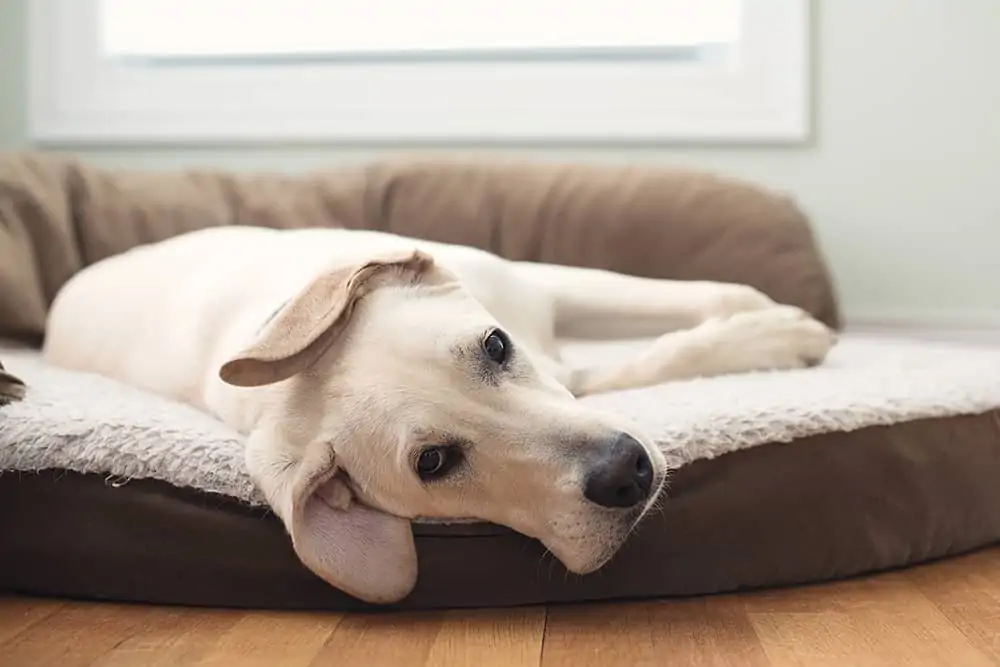Can Labradors Be Left Alone At Home?
If you’re like most Labrador owners, your dog is your best buddy, and you’d spend all day hanging out with them if you could. Unfortunately, work and other obligations can keep us away from home more than we wish. But, can Labradors be left alone?

With proper training and preparation, most healthy adult Labradors are perfectly fine if left alone during the average workday. Here’s how to create a safe space for them, how to get them comfortable with the idea of staying alone, and tips.
When you and your pup must spend time apart, do so in style.
How Do Labradors React to Being Alone?
Labradors love people and other pets. They’re highly social dogs. Even though they prefer social interaction, the breed is typically flexible and laid-back, allowing them to handle spending time on their own.
If you leave your Labrador alone regularly, make sure to give them plenty of attention and play when you’re home. They’ll want to spend time around the family in the evening and will likely feel most comfortable sleeping in a room with at least one family member at night.
Destruction is a sure sign that your dog is having issues being left alone. Chewed up furniture, bedding, and other household items typically indicate one of two issues:
- Boredom
- Anxiety
If your dog acts fine when you’re gone for an hour or two but tears up the house if left alone for longer periods, they’re likely bored. Try exercising your dog before leaving, and give them plenty of mentally stimulating toys (I’ll cover the details below).
If destruction occurs regardless of how long you’re gone, and your dog appears upset and nervous when you’re getting ready to leave, they’re likely experiencing separation anxiety. You’ll want to follow the guidelines below to help them become comfortable with your absence.
Can I Leave My Labrador Puppy Alone?
The early months with a puppy are a bit of a balancing act. You want to introduce your puppy to the concept of spending time alone, but they’re also too young to be left unsupervised for long periods.
Puppies under six months of age shouldn’t be left alone for more than two hours. After six months, you can start leaving your dog on its own for longer amounts of time. Eventually, with proper training and the right home conditions, a Labrador can stay home alone for about eight hours.
Tips for Leaving a Labrador Alone
You and your dog need to ease into the process by following these strategies.
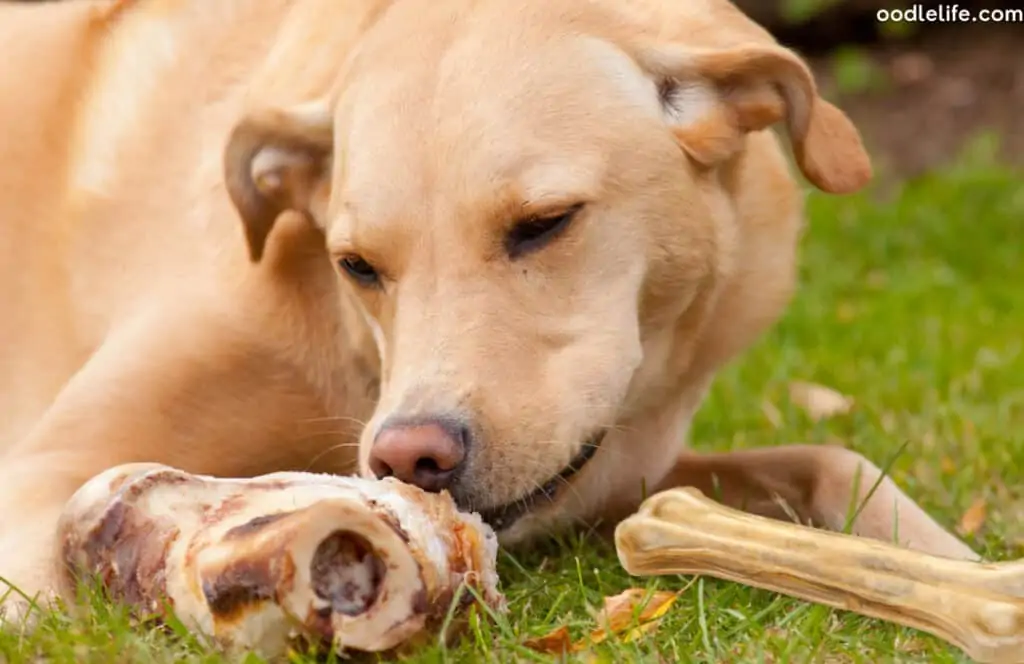
Start by Staying at Home
Give your puppy a safe space all of his own, such as a crate or exercise pen. Place them in their area and leave the room for 20 to 30 minutes at a time. Gradually increase the time you’re gone. It’s a safe way to help them grow comfortable with the idea of not seeing you at all times.
Take it Slow
After they’re six months old, you can start leaving your pup alone for one to two hours at a time. Then, increase the duration of alone time by 30 minutes. The timeline for increasing alone time will vary based on your dog’s comfort, the number of days in a row you leave him alone, and other factors. If you’re not sure, start slow, adding 30 minutes per week.
Keep Them Inside
Leaving your dog outside and unsupervised is dangerous. Sudden shifts in the weather can leave them uncomfortably hot or cold. Plus, if they panic or grow bored, they can potentially escape into the neighborhood. Keeping them inside is safest.
Tire Them Out
Before leaving them for more than a few hours, give your dog some vigorous exercise, such as 30 minutes of walking, playing fetch, or other activities. You might have to get up earlier than you’d like before leaving for work, but a tired dog is more likely to spend their alone time sleeping instead of acting destructively.
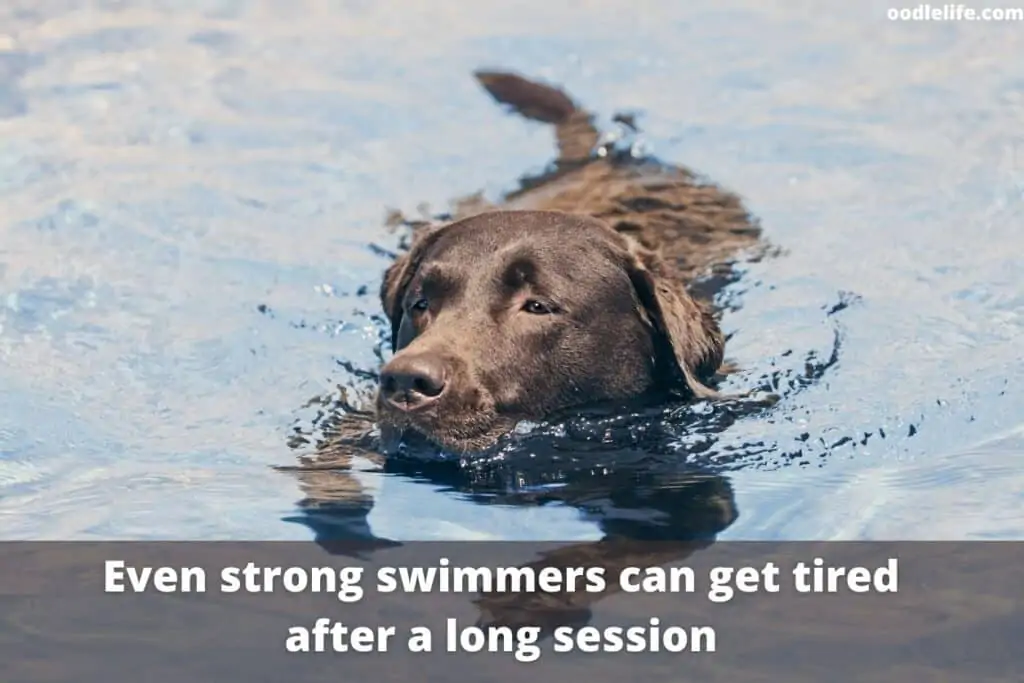
Give Them Activity Toys
Both Golden Retrievers and Poodles rank in the top five of most intelligent dog breeds, naturally suggesting Labradors are smart, too. To keep them entertained during the day, you’ll want to give them stimulating puzzle toys, such as puzzle boxes and Kongs packed with yogurt or peanut butter.
Leave and Return with Little Fanfare
Dogs pick up on emotions easily. If you feel guilty or anxious about leaving them for the day, they’ll likely sense your apprehension and become anxious as well. Instead, prepare as matter-of-factly as possible, and try to leave when your dog is calm.
Likewise, when you return home, don’t turn the occasion into a huge celebration. Turning your return into a party teaches your dog to associate your absences with feelings of nervousness and fear.
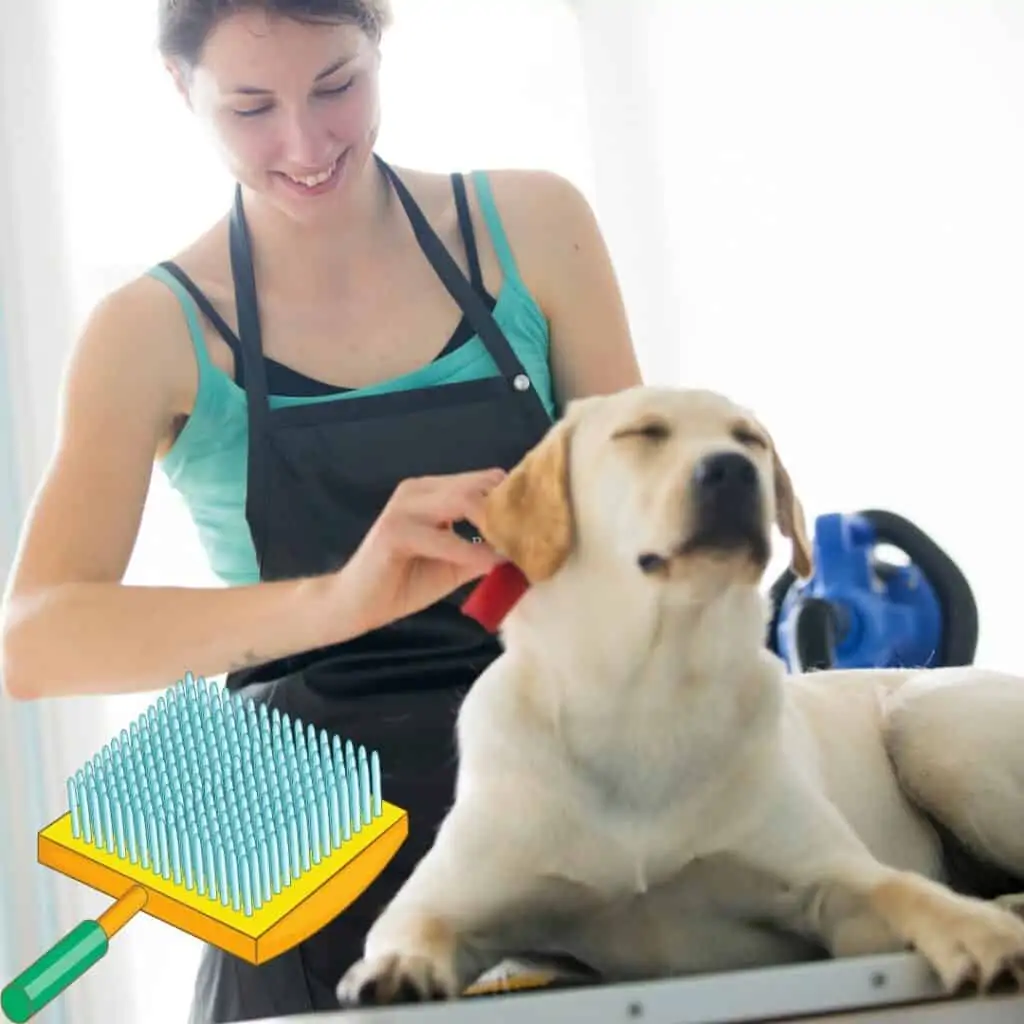
What about the Bathroom?
An adult Labrador can go about six to eight hours without using the bathroom – but it’s not ideal.
The best possible situation is one where the dog can use the bathroom whenever they want. If you leave your dog in a large enough area, such as a basement, you could train them to use pee pads.
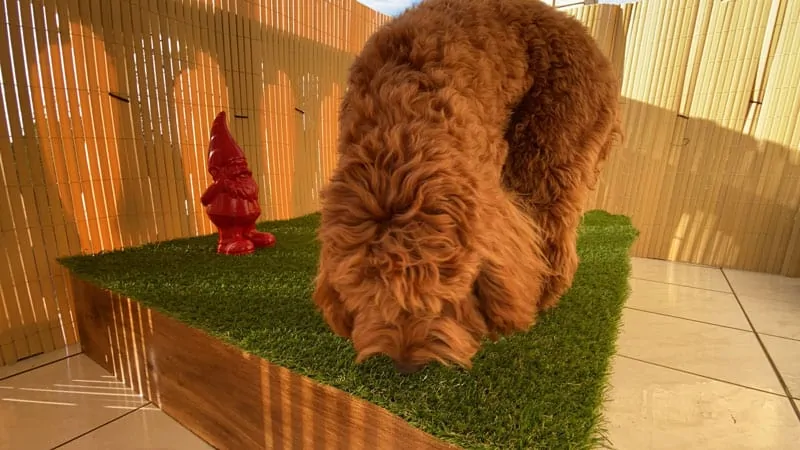
Another option is a dog door to give them access to your yard. As mentioned above, allowing your dog unsupervised access to a yard does pose certain risks. You’ll need to secure your yard with suitable fencing so your dog can’t escape.
If you can’t give your dog a place where they can go to the bathroom while you’re away, the next-best alternative is for you to return home midday to let them use the bathroom.
Regardless, you’ll need to let them use the bathroom:
- Within a half-hour of leaving
- Immediately upon returning home
Remember: It’ll take your dog some time to learn how to hold their bladder all day long. A six-month-old dog will likely have more accidents during the day than an older dog who is more comfortable spending time alone.
Can a Labrador be Left Alone in a Crate?
You shouldn’t leave your dog in a crate for more than three or four hours, making crating unsuitable for all-day use. Confining your dog to a small space when you’re gone not only increases their fear but can lead to joint problems and other health issues over time.
However, if your dog is crate trained, they’ll think of their crate as a safe space. You’ll want to give them access to their open crate when you’re gone, so they can go inside as they please.
Enlist the Help of Other People
Although an adult Labrador can stay by themselves for up to eight hours, it’s not the most comfortable way to live. Consider enlisting someone else to help you out.
Dog Walker
You can arrange for a professional dog walker to let themselves into your home and take your pup for a stroll around the neighborhood. Not only does a walk give your dog a chance to go to the bathroom, but it helps them burn off energy, helping them stay relaxed for the second half of the day.
Similar services are available where a professional will arrive at your home and let your dog into your yard. The dog gets a bathroom break and the opportunity to play in a familiar setting. Also, because letting your dog into your backyard is much easier than taking them for a walk, you might have an easier time getting a friend or neighbor to help you.
Doggy Daycare
Instead of leaving your dog alone, you might want to sign them up for doggy daycare. They can run and play in a secure area where they’re supervised by dog care experts.
Aside from the exercise benefits, daycare also helps your dog learn proper socialization skills. A well-socialized dog is confident, less afraid of new experiences, and generally well-behaved.

Bring Your Dog to Work
If your workplace allows pets, consider bringing your dog to work. You and your buddy can hang out together.
There are some drawbacks to bringing your pet to work. Providing them with stimulation during the day, such as opportunities to run around and play, is often difficult. Bringing your Labrador to work is usually fine as an occasional treat but usually not a long-term solution.
Conclusion
Can Labradors be left alone?
Yes, adult Labradors can be left alone for up to eight hours, provided you’ve created a secure and comfortable space for them. Ideally, they should have free access to a bathroom area; otherwise, you want to arrange for a bathroom break. Also, leave them indoors with food, water, and mentally-stimulating toys.
The key to success is taking it slow. Keep your dog alone for short periods at first, and gradually increase the duration. By following the tips above, you’ll be able to leave your Labrador at home alone while keeping them safe, healthy, and happy. It makes the reunion that much sweeter!
